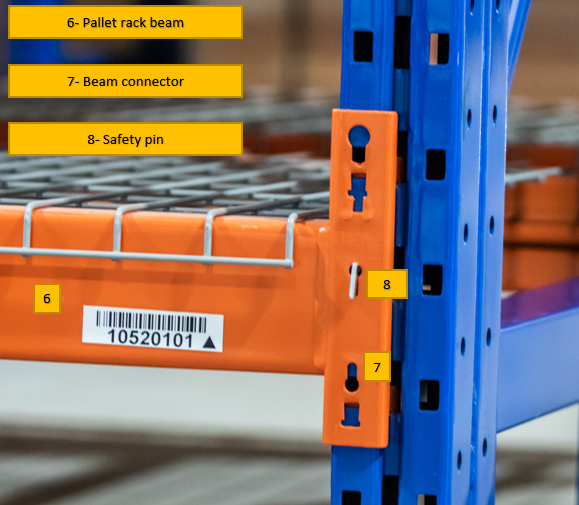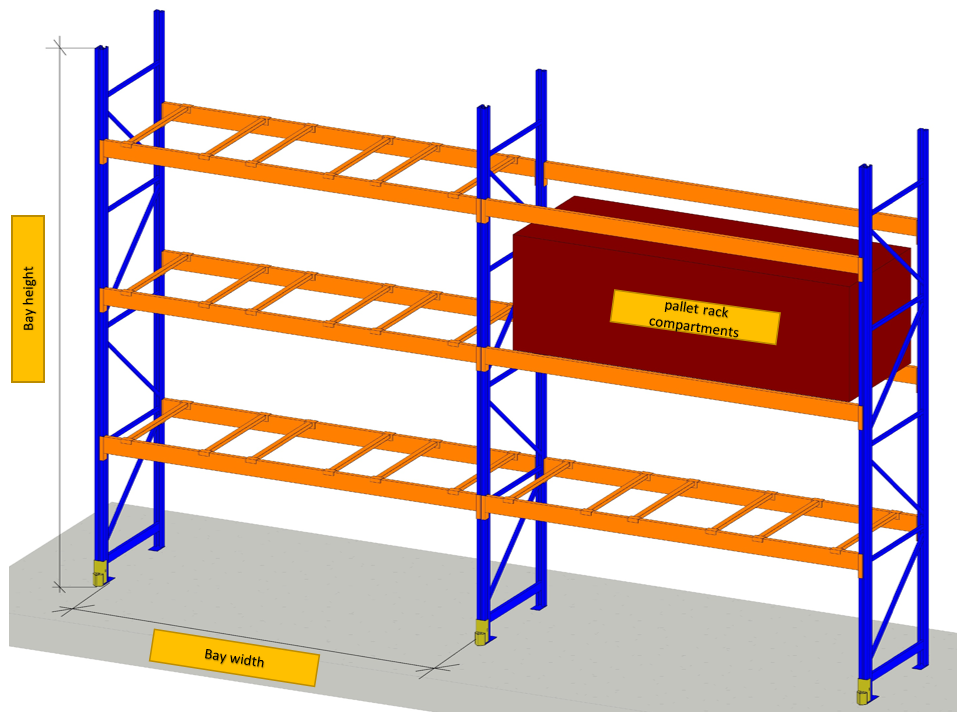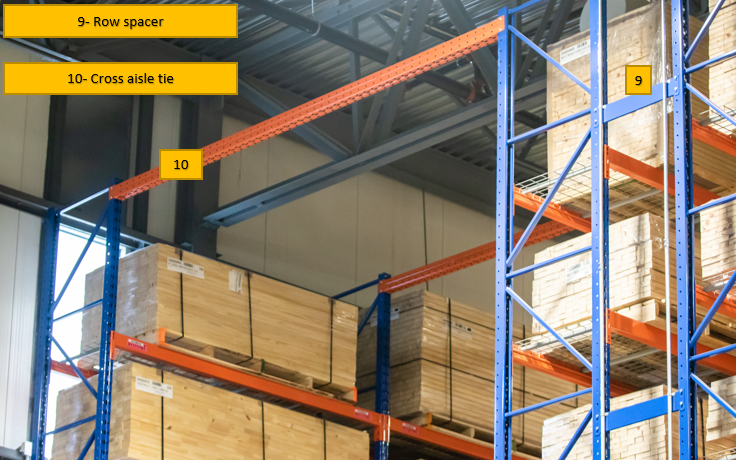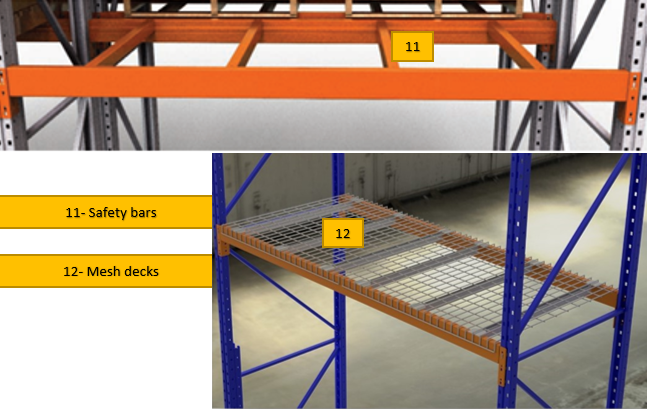
Mastering pallet rack terminology
You’ve probably heard the term “racking” frequently used to describe storage systems in a warehouse. Do you know the names of the different parts that make up a pallet rack structure? In this article we will demystify for you the main components of a storage system.
The first thing you see when you look at a pallet rack structure is the upright. Uprights are made up of several subcomponents:
- Upright frame columns
- Upright braces are divided into two groups:
- Diagonal braces
- Horizontal braces
- Base plate
- Column guard

In this picture, you can see that the front upright column is doubled. This helps to reinforce the upright so it can withstand forklift impacts. More details about this design here.
Uprights are connected to each other with pallet rack beams, commonly called beams. At each end of the beams are beam connectors. These connectors allow the beams to hook onto the upright frame columns, and safety pins installed in the connectors prevent the beam from accidentally separating from the upright column.

The combination of horizontal (beam) and vertical (upright) components forms pallet rack compartments that are actually the space where the pallets are stored. A bay is the set of stacked compartments that are found between two uprights.

To improve the stability of the pallet racks, you can see row spacers connecting the uprights of two rows placed back-to-back. Cross aisle ties, visible at the top of the structure, are designed to stabilize single rows.

As a safety accessory, for example to avoid the collapse of an incorrectly positioned pallet, there must be safety bars or mesh decks.

Each component has a specific function in a pallet rack structure. Of course, this list is not exhaustive, and many other components can be added to meet your specific needs. We invite you to consult our Resource Library section and to contact one of our representatives!
